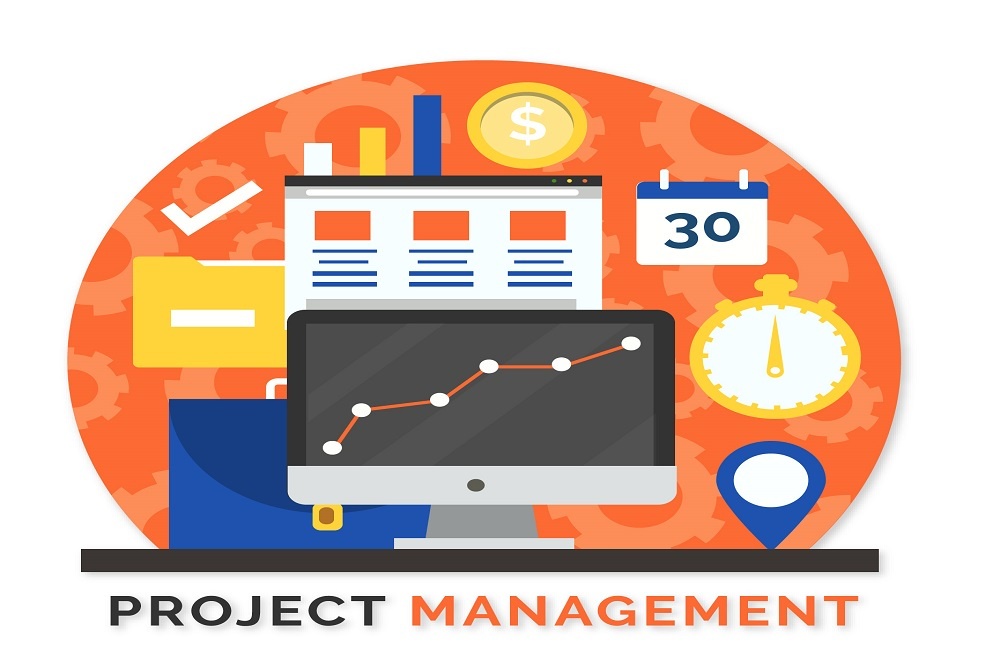Project management tools serve as the backbone of any successful project, offering a structured approach to planning, executing, and monitoring tasks. With the ever-expanding array of options in the market, selecting the right tool for your team can be overwhelming. In this guide, we'll delve into the key considerations to help you make an informed decision when choosing project management tools.
Introduction to Project Management Tools
In today's fast-paced business environment, project management tools play a pivotal role in ensuring project success. These tools encompass a wide range of functionalities, including task management, resource allocation, collaboration, and reporting. By centralizing project-related information and facilitating communication among team members, project management tools streamline workflows, enhance productivity, and improve project outcomes.
Types of Project Management Tools
Traditional project management tools:
Traditional project management tools adhere to a sequential or waterfall approach, where tasks are completed in a linear fashion, with each phase dependent on the completion of the previous one. These tools are well-suited for projects with clearly defined requirements and stable scope.
Agile project management tools:
Agile project management tools, on the other hand, embrace flexibility and adaptability, allowing teams to respond to changing requirements and priorities quickly. Agile tools facilitate iterative development, frequent collaboration, and continuous improvement, making them ideal for dynamic and rapidly evolving projects.
Hybrid project management tools:
Hybrid project management tools combine elements of both traditional and agile methodologies, offering the best of both worlds. These tools provide the structure and predictability of traditional project management, coupled with the flexibility and responsiveness of agile practices, making them suitable for a wide range of project types and team preferences.
Key Features to Consider
Task management capabilities:
Effective task management lies at the core of project management. Look for tools that allow you to create, assign, prioritize, and track tasks seamlessly. Advanced features such as task dependencies, subtasks, and recurring tasks can further enhance your team's productivity and efficiency.
Collaboration tools:
Collaboration is essential for successful project execution, especially in distributed or remote teams. Choose a tool that offers robust collaboration features, including real-time messaging, file sharing, commenting, and @mentions. Integration with popular communication platforms such as Slack or Microsoft Teams can also streamline communication and enhance collaboration.
Reporting and analytics:
Data-driven decision-making is crucial for project success. Select a tool that provides comprehensive reporting and analytics capabilities, allowing you to track project progress, identify bottlenecks, analyze trends, and make informed decisions. Customizable dashboards and built-in analytics tools can provide valuable insights into your team's performance and project health.
Customization options:
Every project is unique, with its own set of requirements and workflows. Look for a tool that offers customization options to tailor the software to your specific needs. Customizable fields, project templates, and workflow automation can help you adapt the tool to your team's preferences and processes, rather than forcing you to conform to rigid predefined structures.
Scalability and Integration
Scalability:
As your team and projects grow, it's essential to choose a tool that can scale with your organization. Consider factors such as the maximum number of users supported, storage limits, and performance under heavy workloads. Scalable solutions ensure that your project management tool can accommodate your evolving needs and accommodate future growth without hindering performance or functionality.
Integration:
No project management tool operates in isolation. Ensure that the tool integrates seamlessly with other software and tools your team uses on a daily basis, such as email clients, calendar applications, document repositories, and collaboration platforms. Integration eliminates data silos, streamlines workflows, and enhances productivity by allowing information to flow freely between different systems.
User-Friendliness and Accessibility
User-Friendliness:
An intuitive and user-friendly interface is essential for widespread adoption and user satisfaction. Choose a tool that is easy to navigate, with clear menus, intuitive navigation paths, and a visually appealing design. Features such as drag-and-drop task management, customizable dashboards, and contextual help can further enhance usability and user experience.
Accessibility:
In today's increasingly mobile workforce, accessibility is paramount. Select a tool that is accessible across different devices and platforms, including desktops, laptops, smartphones, and tablets. Native mobile apps or responsive web interfaces ensure that team members can access the tool anytime, anywhere, allowing them to stay connected and productive, even on the go.
Cost and Budget
Pricing models:
Project management tools offer various pricing models, ranging from free plans with basic features to tiered subscriptions with advanced functionalities. Evaluate your budget constraints and project requirements to determine the most cost-effective option for your team. Consider factors such as the number of users, storage limits, and additional features included in each plan.
Value for money:
While cost is undoubtedly a significant factor, it's essential to consider the value the tool provides relative to its price. Look beyond the sticker price and assess factors such as the tool's functionality, usability, scalability, customer support, and return on investment (ROI). Investing in a high-quality project management tool can yield significant benefits in terms of improved productivity, streamlined workflows, and better project outcomes.
Customer Support and Training
Customer support:
Reliable customer support is essential for resolving technical issues, answering questions, and providing guidance during implementation and usage. Choose a vendor that offers responsive and knowledgeable customer support via multiple channels, such as phone, email, live chat, and online forums. Timely and effective support ensures that your team can overcome any obstacles and maximize the value of the tool.
Training resources:
Comprehensive training resources are critical for ensuring the successful adoption and usage of the project management tool. Look for vendors that offer a variety of training options, including documentation, tutorials, video guides, webinars, and in-person training sessions. Tailored training programs can help onboard new users, educate existing users on advanced features, and empower your team to leverage the full capabilities of the tool effectively.
Security and Compliance
Data security:
Protecting sensitive project data is paramount in today's digital landscape. Choose a project management tool that prioritizes data security and implements robust security measures such as data encryption, role-based access controls, two-factor authentication, and regular security audits. Compliance with industry standards and regulations such as GDPR, HIPAA, SOC 2, and ISO 27001 provides assurance that your data is handled securely and responsibly.
Compliance:
In addition to data security, ensure that the project management tool complies with relevant industry standards and regulations governing data privacy, confidentiality, and security. Conduct due diligence to verify the vendor's compliance certifications, audit reports, and adherence to best practices for data protection and privacy. Compliance with regulatory requirements not only mitigates the risk of data breaches but also instills trust and confidence among stakeholders and customers.
Reviews and Recommendations
User reviews:
User reviews and testimonials provide valuable insights into the real-world experiences of other users with the project management tool. Explore review websites, forums, social media channels, and industry publications to gather feedback and opinions from current and past users. Pay attention to common themes, recurring issues, and overall satisfaction levels to gauge the tool's strengths and weaknesses objectively.
Recommendations:
Seek recommendations from industry peers, colleagues, and professional networks who have firsthand experience with the project management tool. Their insights, recommendations, and tips can help you make an informed decision and avoid common pitfalls. Ask specific questions about their usage scenarios, challenges faced, and key benefits derived from using the tool to gain a deeper understanding of its suitability for your organization.
Case Studies and Examples
Real-world examples:
Review case studies, success stories, and testimonials from organizations that have successfully implemented the project management tool. Case studies provide concrete examples of how the tool has helped businesses overcome challenges, achieve goals, and drive results. Look for companies similar in size, industry, and project complexity to assess the tool's relevance and applicability to your specific context.
Implementation examples:
Explore implementation examples and best practices to gain insights into how other organizations have customized and optimized the project management tool to meet their unique needs. Implementation examples showcase innovative use cases, creative solutions, and practical tips for maximizing the value and effectiveness of the tool. Draw inspiration from successful implementations to tailor the tool to your team's workflows and requirements effectively.
Comparison with Competitors'
Competitive analysis:
Conduct a comprehensive comparison of the shortlisted project management tools, evaluating factors such as features, functionality, usability, scalability, pricing, customer support, and user satisfaction. Create a matrix or comparison chart to highlight the strengths, weaknesses, and key differentiators of each tool relative to its competitors. Consider conducting a pilot or trial period to test the tool's performance and suitability firsthand before making a final decision.
User feedback:
Consider user feedback and reviews from current users of the project management tools to supplement your evaluation. User feedback provides valuable insights into the tool's usability, reliability, performance, and customer support. Pay attention to common pain points, recurring issues, and user satisfaction levels to gauge the tool's overall user experience and satisfaction.
Future-Proofing
Adaptability:
Choose a project management tool that is adaptable to future trends, technologies, and business requirements. Look for vendors that regularly update their software with new features, enhancements, and integrations to stay ahead of the curve. Scalable architecture, open APIs, and extensibility ensure that the tool can evolve and grow with your organization, supporting your changing needs and priorities over time.
Innovation:
Assess the vendor's track record of innovation and commitment to continuous improvement. Choose a vendor that invests in research and development, listens to customer feedback, and incorporates user-driven enhancements into their product roadmap. Innovation ensures that the project management tool remains relevant, competitive, and valuable in the long run, keeping your team ahead of the curve and empowering them to achieve their goals effectively.
Conclusion
Choosing the best project management tool for your organization is a multifaceted decision that requires careful consideration of various factors, including functionality, usability, scalability, cost, security, and support. By prioritizing your team's unique needs and preferences and evaluating different options objectively, you can select a tool that aligns with your goals, enhances your workflows, and drives project success. Remember to involve key stakeholders, conduct thorough research, and leverage real-world examples and recommendations to make an informed decision that sets your team up for success.
FAQs
What are some popular project management tools?
Trello, Asana, Jira, and Monday.com are among the most popular project management tools available today, each offering a unique set of features and functionalities to suit different project needs and team preferences.
How do I determine which project management tool is best for my team?
Consider factors such as your team's size, project requirements, preferred workflow, budget, and desired features when evaluating project management tools. Conduct thorough research, gather feedback from stakeholders, and trial different options to find the best fit for your organization.
Can project management tools be customized to suit specific project needs?
Yes, many project management tools offer customization options, allowing you to tailor the software to your team's unique needs and workflows. Look for tools that provide flexible customization features such as customizable fields, project templates, and workflow automation to adapt the tool to your requirements effectively.
Are there free project management tools available?
Yes, there are several free project management tools available, offering basic features and functionality at no cost. While free tools can be a good starting point for small teams or simple projects, they may have limitations in terms of scalability, advanced features, and customer support. Consider your project requirements and budget constraints when evaluating free vs. paid options.
How can I ensure successful adoption of a project management tool within my organization?
Successful adoption of a project management tool requires effective change management, communication, and training. Involve key stakeholders from the outset, communicate the benefits and objectives of the tool, provide comprehensive training and support, and lead by example to encourage widespread adoption and usage among team members.
Visit: https://www.tasktrain.app/
Source: https://bresdel.com/blogs/479218/Choosing-the-Best-Project-Management-Tools-What-Should-You-Consider


No comments yet